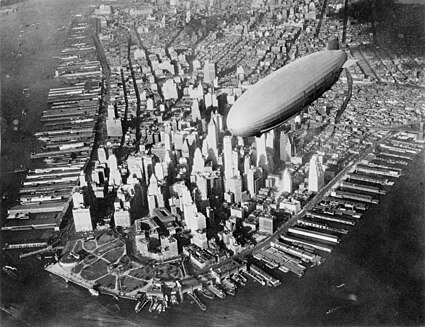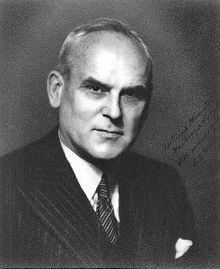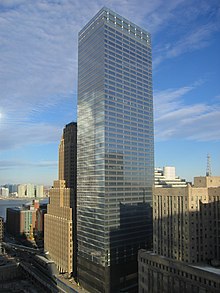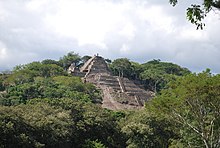Portal:North America: Difference between revisions
image layout |
Layout |
||
| Line 73: | Line 73: | ||
{{Box-footer}} |
{{Box-footer}} |
||
{{/box-header|Featured picture {{#if: {{{Purge|}}}{{{purge|}}} | {{{Purge|}}}{{{purge|}}} |- {{purge|<small>{{color|white|''show another''}}</small>}}}}}} |
{{/box-header|[[File:Cscr-featured.png|19px]] Featured picture {{#if: {{{Purge|}}}{{{purge|}}} | {{{Purge|}}}{{{purge|}}} |- {{purge|<small>{{color|white|''show another''}}</small>}}}}}} |
||
''<center><small>This is a [[:c:Commons:Featured pictures|Featured picture]] that the [[:c:Main page|Wikimedia Commons]] community has chosen as one of of the highest quality on the site.</small></center>'' |
''<center><small>This is a [[:c:Commons:Featured pictures|Featured picture]] that the [[:c:Main page|Wikimedia Commons]] community has chosen as one of of the highest quality on the site.</small></center>'' |
||
---- |
---- |
||
Revision as of 20:47, 25 August 2019
|
The North America Portal North America is a continent in the Northern and Western Hemispheres. North America is bordered to the north by the Arctic Ocean, to the east by the Atlantic Ocean, to the southeast by South America and the Caribbean Sea, and to the west and south by the Pacific Ocean. The region includes the Bahamas, Bermuda, Canada, the Caribbean, Central America, Clipperton Island, Greenland, Mexico, Saint Pierre and Miquelon, Turks and Caicos Islands, and the United States. North America covers an area of about 24,709,000 square kilometers (9,540,000 square miles), representing approximately 16.5% of the Earth's land area and 4.8% of its total surface area. It is the third-largest continent by size after Asia and Africa, and the fourth-largest continent by population after Asia, Africa, and Europe. , North America's population was estimated as over 592 million people in 23 independent states, or about 7.5% of the world's population. In human geography, the terms "North America" and "North American" sometimes refer to just Canada, the United States, Mexico, and Greenland. It is unknown with certainty how and when first human populations first reached North America. People were known to live in the Americas at least 20,000 years ago, but various evidence points to possibly earlier dates. The Paleo-Indian period in North America followed the Last Glacial Period, and lasted until about 10,000 years ago when the Archaic period began. The classic stage followed the Archaic period, and lasted from approximately the 6th to 13th centuries. Beginning in 1000 AD, the Norse were the first Europeans to begin exploring and ultimately colonizing areas of North America. In 1492, the exploratory voyages of Christopher Columbus led to a transatlantic exchange, including migrations of European settlers during the Age of Discovery and the early modern period. Present-day cultural and ethnic patterns reflect interactions between European colonists, indigenous peoples, enslaved Africans, immigrants from Europe, Asia, and descendants of these respective groups. (Full article...) 7 World Trade Center (7 WTC, WTC-7, or Tower 7) is an office building constructed as part of the new World Trade Center in Lower Manhattan, New York City. The tower is located on a city block bounded by Greenwich, Vesey, Washington, and Barclay Streets on the east, south, west, and north, respectively. 7 World Trade Center was developed by Larry Silverstein, who holds a ground lease for the site from the Port Authority of New York and New Jersey, and designed by Skidmore, Owings & Merrill. The building was constructed to replace the original structure on the site, part of the original World Trade Center. The previous structure, completed in 1987, was destroyed in the September 11 attacks in 2001. Construction of the new 7 World Trade Center began in 2002 and was completed on May 23, 2006. The building is 52 stories tall (plus one underground floor), making it the 64th-tallest in New York. It is built on a smaller footprint than the original; a small park across Greenwich Street occupies space that was part of the original building's footprint. (Full article...)  The airship USS Akron flying over the southern tip of Manhattan circa 1931–1933. The Akron was a commissioned 'ship' of the United States Navy, built for them by the Goodyear Zeppelin Corporation in Akron, Ohio. She cast off for her maiden voyage on 2 November 1931, but crashed less than two years later.
 Clarence Decatur Howe PC (UK), PC (Can) (15 January 1886 – 31 December 1960) was an American-born Canadian engineer, businessman and Liberal Party politician. Howe served as a cabinet minister in the governments of prime ministers William Lyon Mackenzie King and Louis St. Laurent continuously from 1935 to 1957. He is credited with transforming the Canadian economy from agriculture-based to industrial. During the Second World War, his involvement in the war effort was so extensive that he was nicknamed the "Minister of Everything". Born in Massachusetts, Howe moved to Nova Scotia as a young adult to take up a professorship at Dalhousie University. After working for the Canadian government as an engineer, he began his own firm and became wealthy. In 1935, he was recruited as a Liberal candidate for the House of Commons of Canada by Mackenzie King. The Liberals won the election in a landslide and Howe won his seat. Mackenzie King appointed him to the Cabinet. There, he took major parts in many new enterprises, including the founding of the Canadian Broadcasting Corporation (CBC) and Trans-Canada Air Lines (today Air Canada). Howe played a crucial role in Canada's war effort during WWII and recruited many corporate executives (as "dollar-a-year-men") to serve as executives in wartime enterprises. (Full article...) Tonina (or Toniná in Spanish orthography) is a pre-Columbian archaeological site and ruined city of the Maya civilization located in what is now the Mexican state of Chiapas, some 13 km (8.1 mi) east of the town of Ocosingo. The site is medium to large, with groups of temple-pyramids set on terraces rising some 71 metres (233 ft) above a plaza, a large court for playing the Mesoamerican ballgame, and over 100 carved monuments, most dating from the 6th century through the 9th centuries AD, during the Classic period. Toniná is distinguished by its well preserved stucco sculptures and particularly by its in-the-round carved monuments, produced to an extent not seen in Mesoamerica since the end of the much earlier Olmec civilization. Toniná possesses one of the largest pyramids in Mexico; at 74 metres (243 ft) in height, it is taller than the Pyramid of the Sun at Teotihuacan. (Full article...) Did you know...
Selected panorama The San Juan Mountains are a rugged mountain range in the Rocky Mountains in southwestern Colorado. The Rio Grande rises on the east side of the range. The San Juan and Uncompahgre National Forest cover a large portion of the San Juan Mountains.
TopicsCategoriesList articlesRelated portalsWikiProjects
Associated WikimediaThe following Wikimedia Foundation sister projects provide more on this subject:
Discover Wikipedia using portals |


































